SRAM introduced the latest version of the Force AXS groupset in March 2023 and, while existing users of the brand's second-tier electronic drivetrain don't need to rush to trade up, this is a groupset that offers top-quality performance across the board.
At first glance, the changes and updates made to the second-generation SRAM Force AXS look to be subtle. The first is the death of 'eTap AXS' as a naming convention. From now on, it's just 'AXS'.
More importantly, however, there are re-profiled shifters, a new front-derailleur design and a new crankset. There’s also slicker rear-derailleur performance to throw into the mix, as well as some more premium-looking aesthetics.
Current users of the previous version of SRAM Force eTap AXS may not find enough of a step up in performance for the outlay required, but after plenty of riding back-to-back against its predecessor (and Shimano Ultegra Di2 R8100), the improvements are noticeable, keeping Force AXS competitive against the latest electronic groupsets.
Should you need a new premium road bike groupset without shelling out top-tier money, Force AXS has plenty to offer.
SRAM Force AXS drivetrain performance
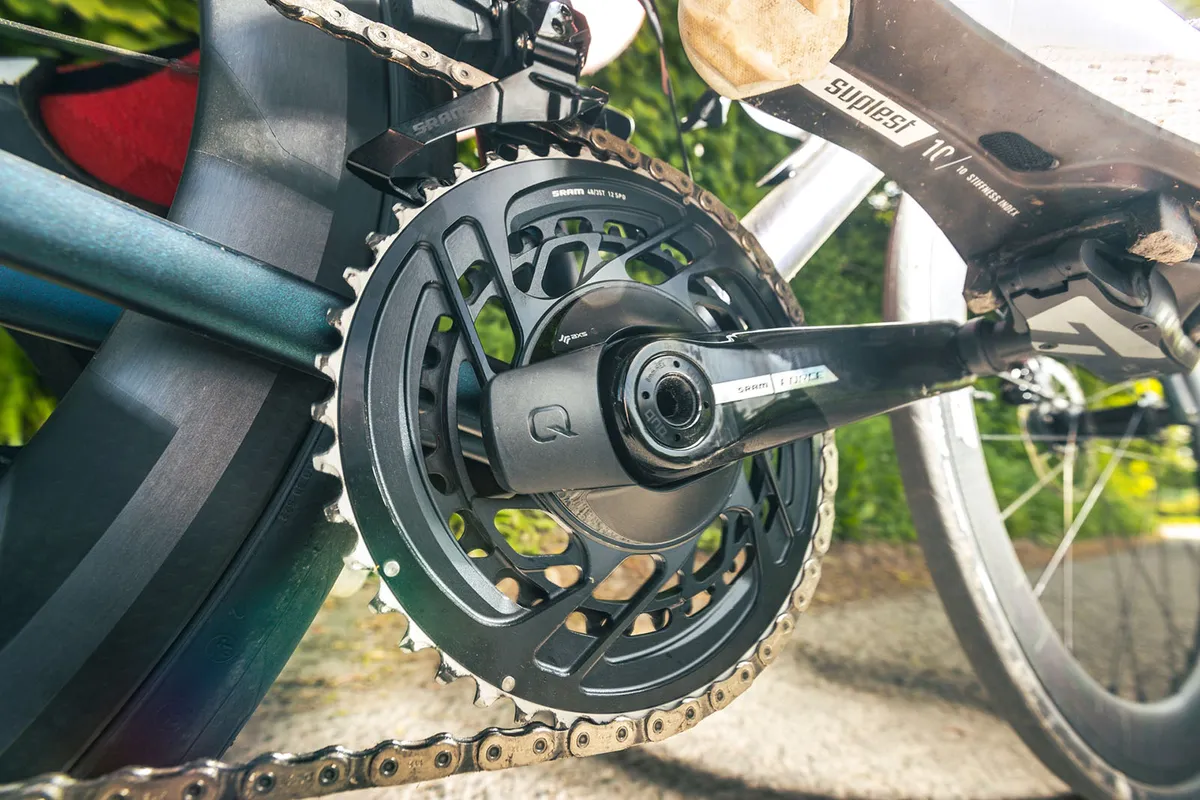
The previous generation of Force AXS was excellent, and I’ve run it on my own bike since 2019.
Although the differences aren’t night-and-day, new Force AXS improves the shifting feel, keeps the same positive braking (but with less noise in adverse conditions), and is noticeably quieter when operating at extremes of the rear-cassette range.
In short, the new Force AXS is a series of refinements rather than major revamps.
SRAM Force AXS shifters
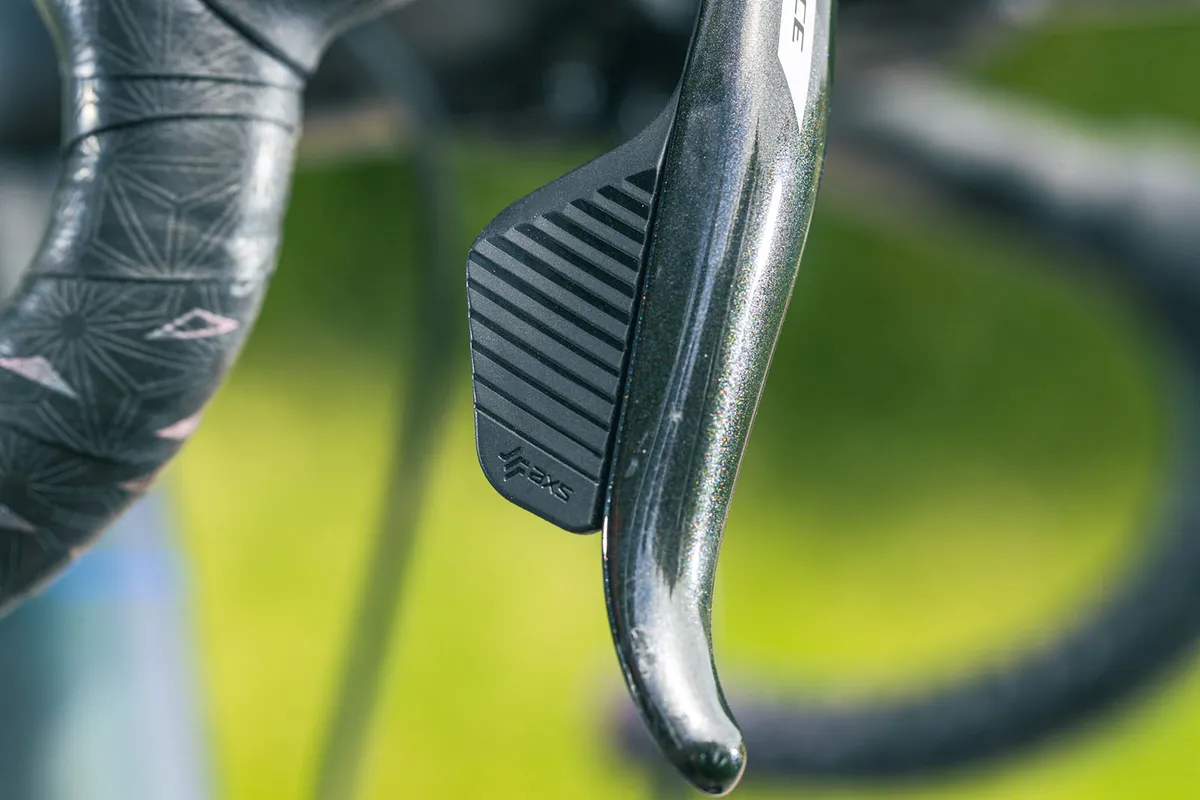
One of the biggest meaningful updates is at the shifters, given they’re the key contact point. The hood shape is slimmed down, mirroring the design first seen on Rival AXS.
There’s a reshaped brake lever and a remodelled contact point on the shifter trigger.
Overall, the new Force AXS shifters follow the same low-profile design as Rival AXS, but with a carbon brake lever.
The shift ergonomics are a marked improvement. The more scalloped brake lever feels better than the noticeably flatter profile of the preceding design.
While I have larger hands, the reshaping has made it more accessible for those with small hands.
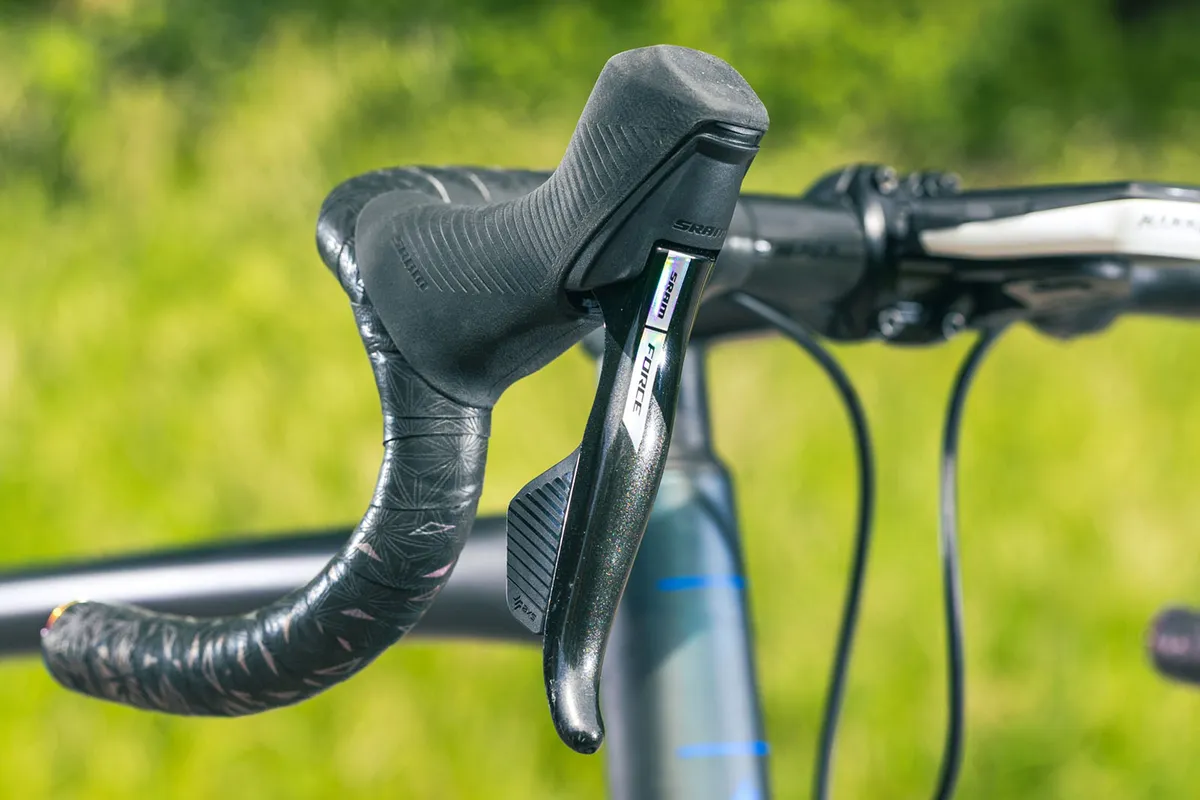
There’s also been a subtle reprofiling of the shift trigger. The more scalloped shape feels easier to action with gloved hands, and the click of the shift buttons feels more positive than the previous levers.
Compared to Ultegra’s shorter-throw clicks, the forceful click of SRAM feels more definitive.
SRAM’s shift logic also remains unchanged – a press of the right button shifts to a harder gear, left triggers to an easier gear, while a simultaneous press toggles the front derailleur.
I find this logic very intuitive.
That said, the thought process and action of pressing two buttons simultaneously can easily convince you that the front derailleur shifts are slower than Shimano's (which employ the left lever’s two buttons to action a shift).
If there is a difference in terms of shift speed, it’s a mere fraction of a second.
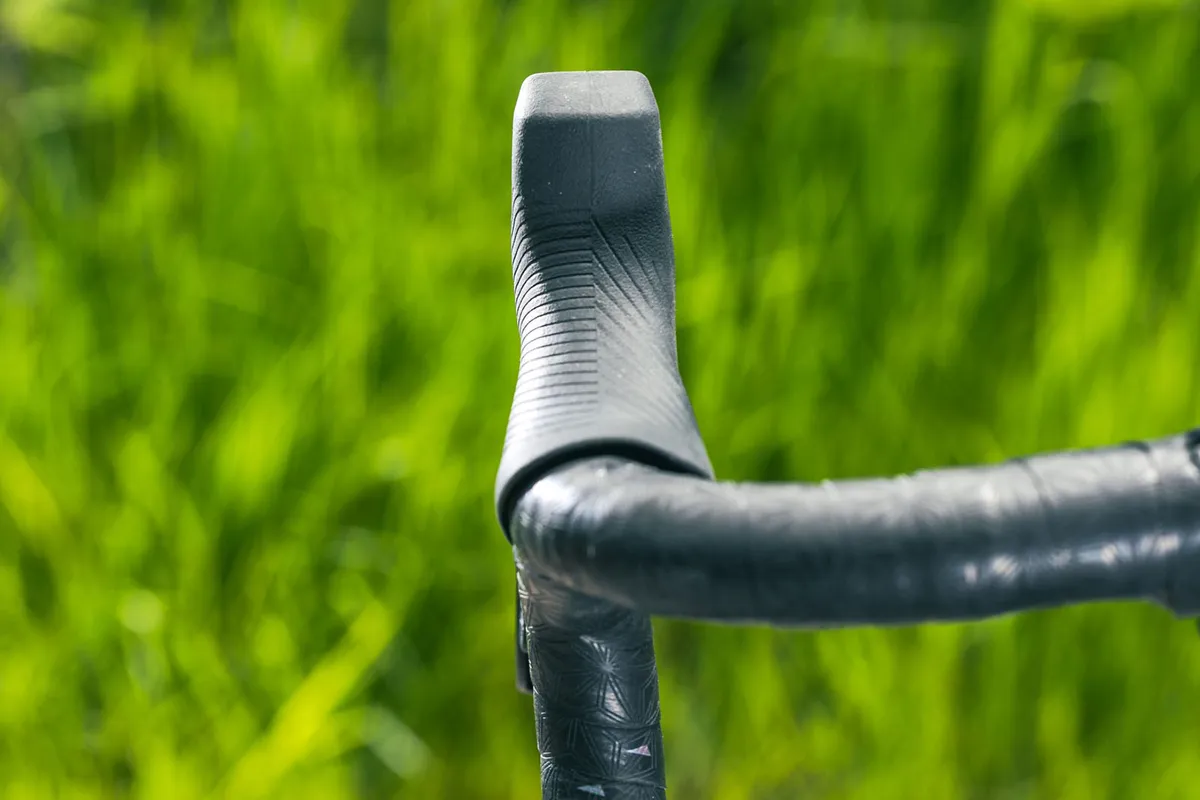
The shifter’s internal workings no longer have a brake-point adjustment facility, while there are no plugs to use wired blips.
Instead, Force AXS now uses the wireless units launched around the same time as Rival AXS.
While some tinkerers may lament the lack of adjustability, the brake feels good straight out of the box. It’s progressive, with a ramping up of tension through the lever travel that makes it easy to get just the right amount of retardation of speed without over-braking.
The shifters still run on a CR2032 cell each and experience shows I get around two years of run time from them before they need replacing.
For comparison, Shimano’s latest semi-wireless CR1632 cell-powered shifters are said to deliver around two and a half years' life (longer than the groupset has been in existence at time of writing).
SRAM wireless blips
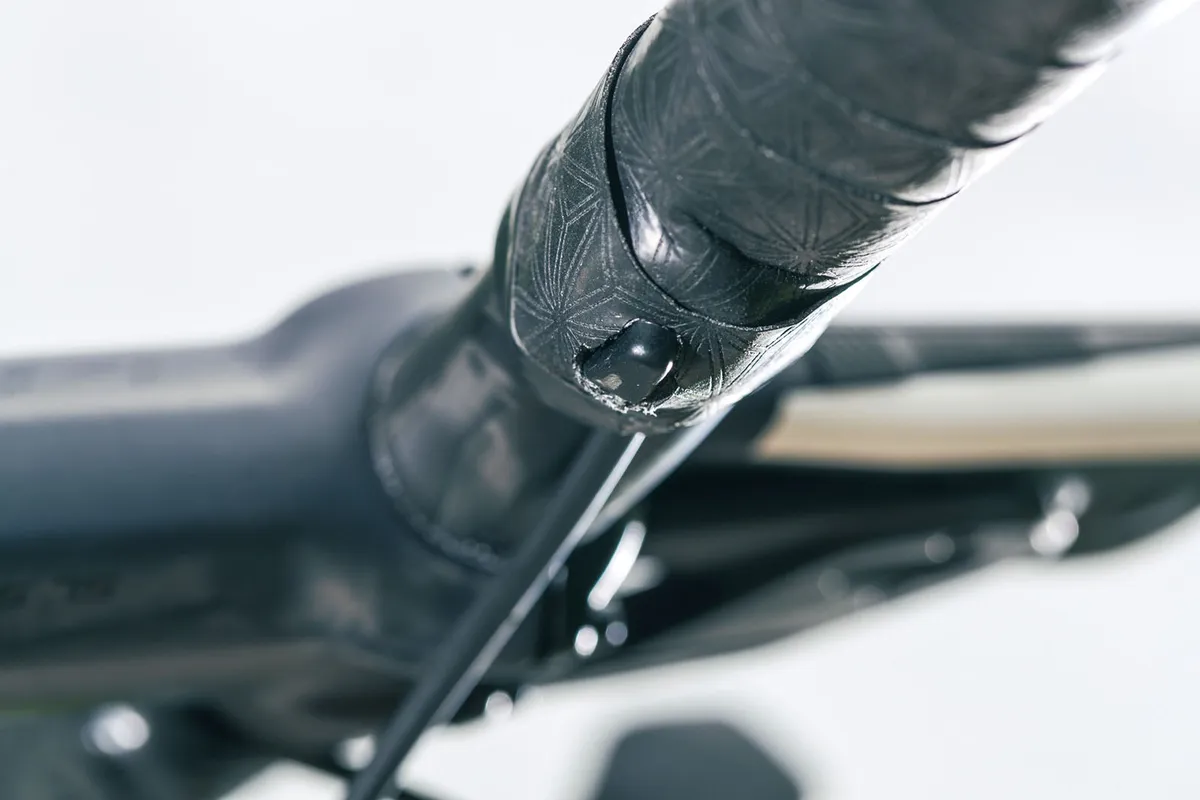
Force AXS supports the use of up to six satellite shifters (known as ‘blips’), which pair to the system via the AXS app.
Effectively, you could run these on the tops of your bars as climbing shifters, in the drops as sprint shifters, and another two on TT-bar extensions. You could also use one to operate an AXS dropper post.
I’ve been running a pair of blips on the underside of the tops on my test bike and they’ve worked flawlessly.
The new slimmed-down trigger has a positive click, and is a useful extension of the groupset, enabling me to spin up a climb with my hands in a comfortable compact position, not having to readjust when I need to shift.
The downside of these wireless blips is they are sealed units with internal batteries, so are disposable.
SRAM claims the blips should run for four years of usage, but at £90/$100 a pair, they aren’t a cheap addition.
SRAM Force AXS front derailleur
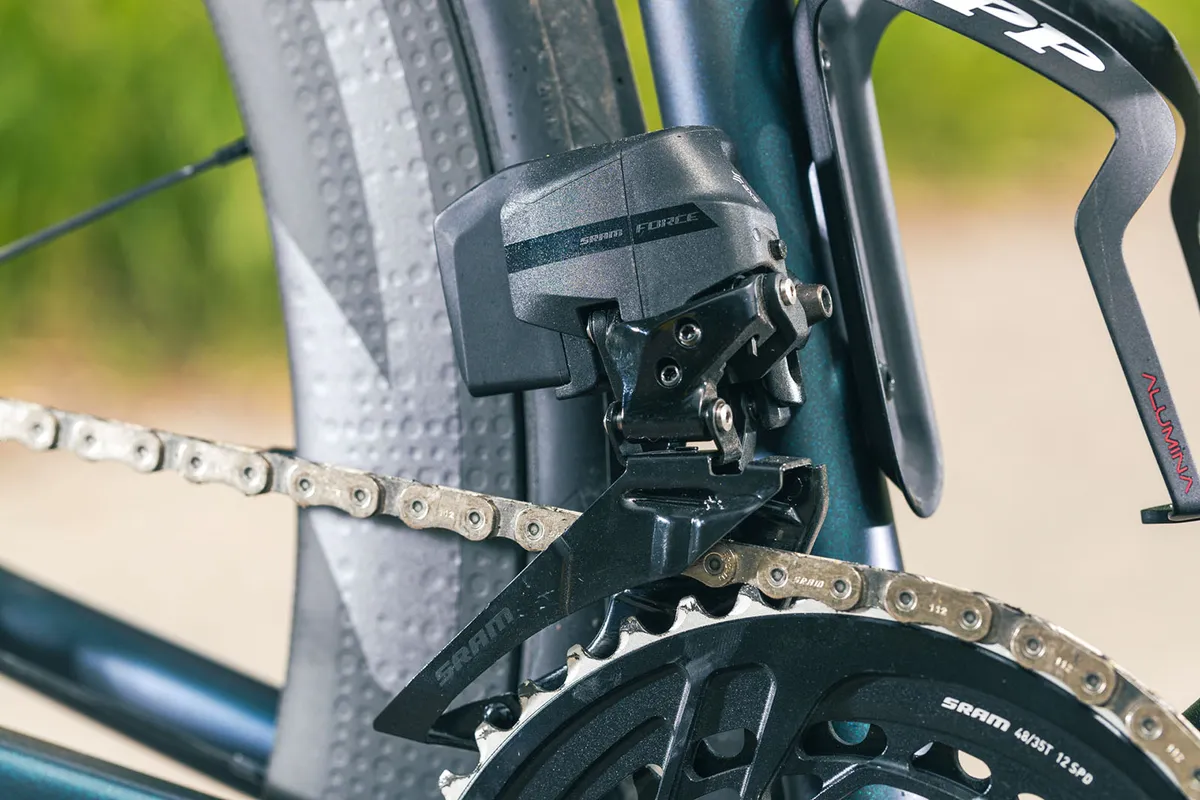
SRAM has remodelled the geometry for the front derailleur by reshaping the cage and the derailleur’s throw, with the aim of achieving a quicker and more accurate shift.
The design is also claimed to cope much better with cross-chaining.
In testing, I found this made the front shifts feel much more stable compared to the previous generation, even when shifting (sub-optimally) under pressure during out-of-the-saddle uphill efforts.
Despite this, I experienced the same hesitance when shifting from the big to small chainring as I’ve felt with other electronic groupsets.
This isn’t anything new: even Shimano Dura-Ace Di2 R9200 sees a similar micro-pause as the chain drops down.
Shifting speed at the front derailleur is near-as-makes-no-difference the same as Ultegra Di2 R8100, which (along with Dura-Ace Di2 R9200) currently sets a gold standard.
That said, the required simultaneous press at the levers makes it feel a tiny fraction slower.
SRAM Force AXS rear derailleur
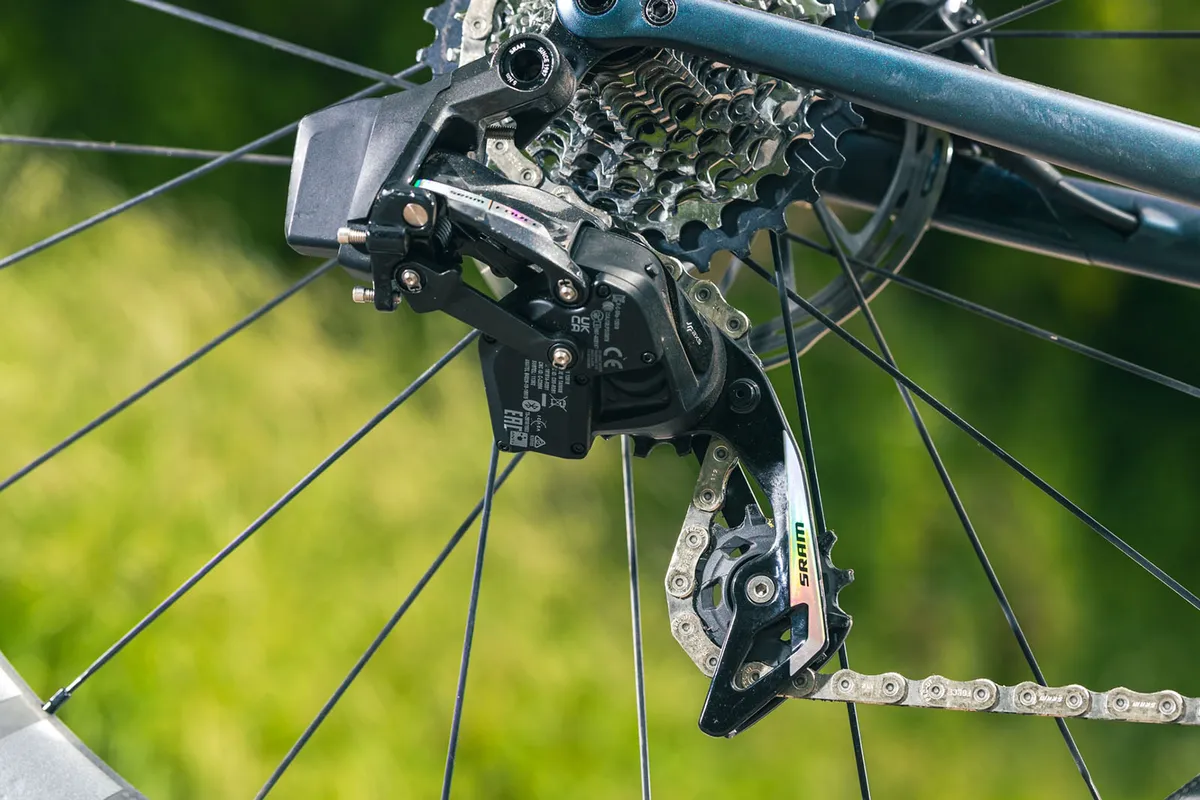
The rear derailleur comes in two types: the standard road version, and the 1x-specific XPLR version.
The standard road derailleur can be used with cassettes from 10-28t through to 10-36t, while XPLR can take SRAM’s 10-44t cassette.
The derailleur’s design hasn’t changed, so (unsurprisingly) the shift speed is unchanged from the previous generation (which was already zippy).
As Liam pointed out in his first ride review, the cassettes (more on these later) have seen a slight modification, which has led to noticeably smoother and quieter performance at the extreme ends of the range.
Shifting modes
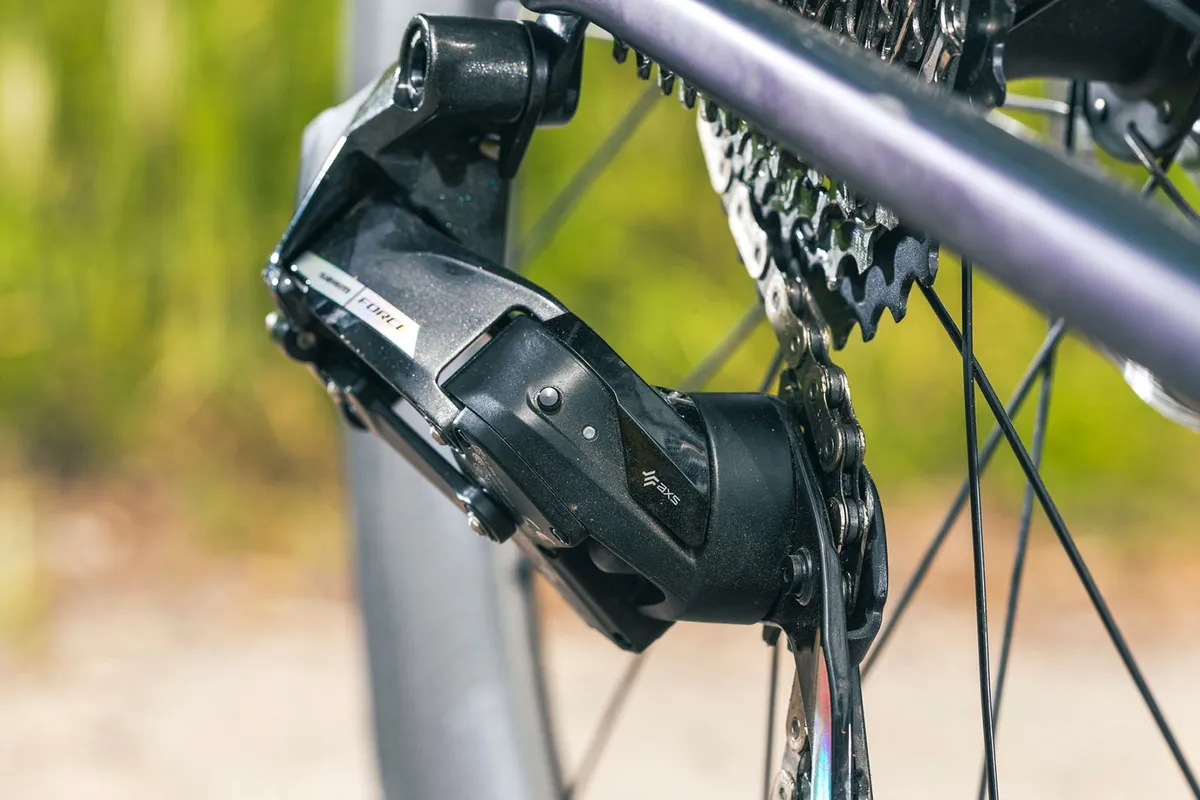
Force AXS continues to offer two enhanced shifting modes as an alternative to standard manual shifting.
In ‘Sequential’ mode (SRAM’s version of Shimano’s ‘Full Synchro’ setting), the system takes care of front shifts at predetermined points as you move up and down the cassette.
Like Shimano’s system, you don’t have to think about your choice of gear much, but some riders (myself included) won’t like handing over the big front-derailleur shifts to a moment determined by the groupset.
In ‘Compensation’ mode (SRAM’s version of Shimano’s ‘Semi Synchro’ setting), front-derailleur shifts are accompanied by an automatic rear shift, which smooths the shift progression to put you in the next closest gear.
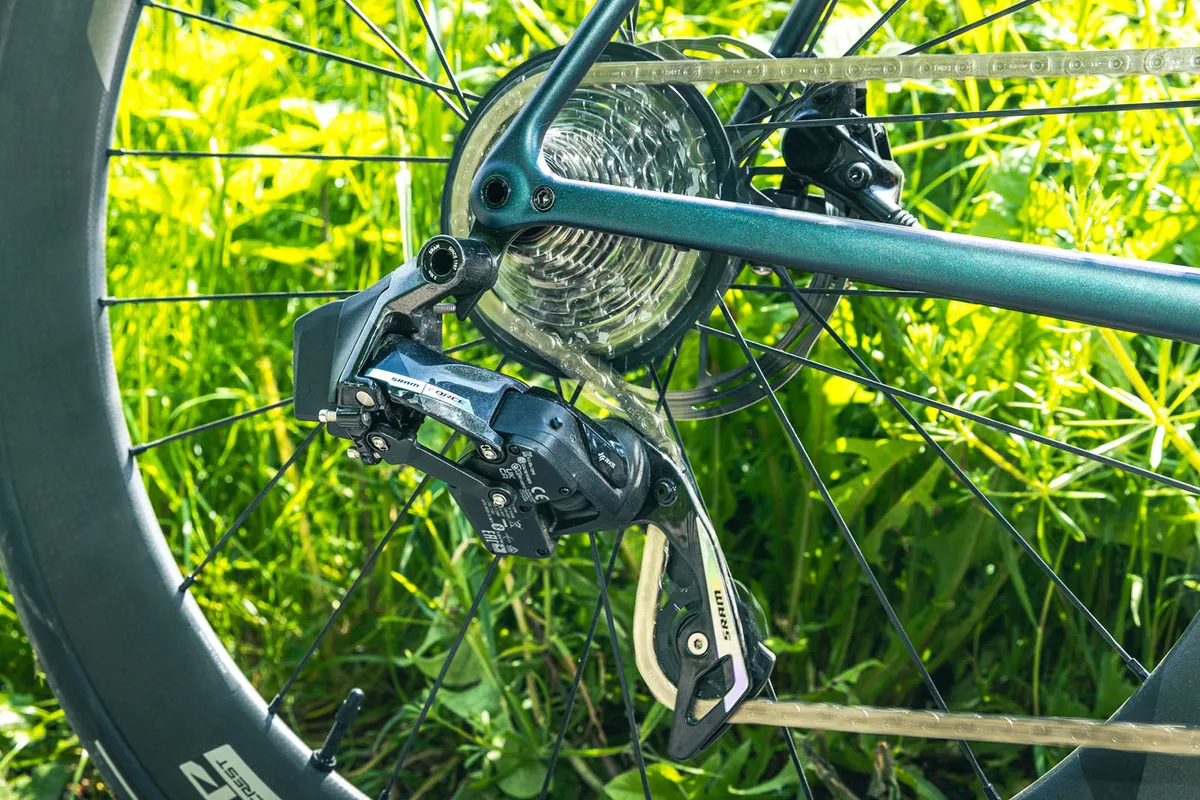
The same reflections apply here as they do to Shimano – ‘Sequential’ shifting is probably best used for some time-trial applications, while ‘Compensation’ mode is more usable on a given road ride.
In very specific circumstances – for example, cresting a hill and wanting to shift quickly into harder gears to accelerate away – it can be counterproductive because it shifts the rear derailleur towards an easier gear.
But overall, it makes for a very smooth shifting experience that still leaves you feeling you’re in full control.
SRAM Force AXS crankset and chainrings
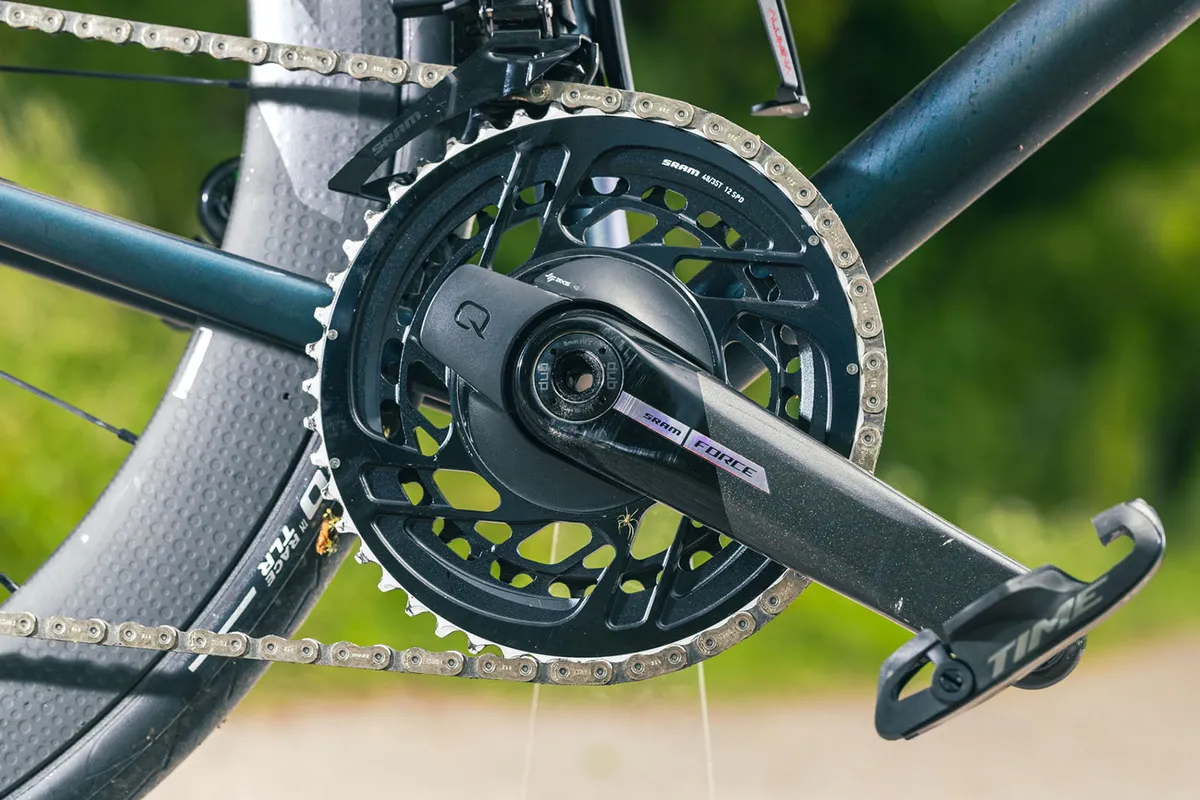
The chainset sees an adapted design of SRAM Red, where the chainrings are machined from a single piece of metal rather than two rings bolted onto a traditional spider.
The advantage, SRAM says, is better chainring stiffness, which contributes to improved shifting and chain management.
The stiffer chainrings certainly play their part in sharpening up front shifting, which as I’ve mentioned, is practically on a par with Shimano Ultegra Di2 R8100. Together, it marks the single biggest performance improvement over the previous generation.
The inevitable downside is that once you wear out a chainring, you must replace both at the same time.
Should you be running the power meter crankset (as I have been), this will also need to be replaced, adding further cost.
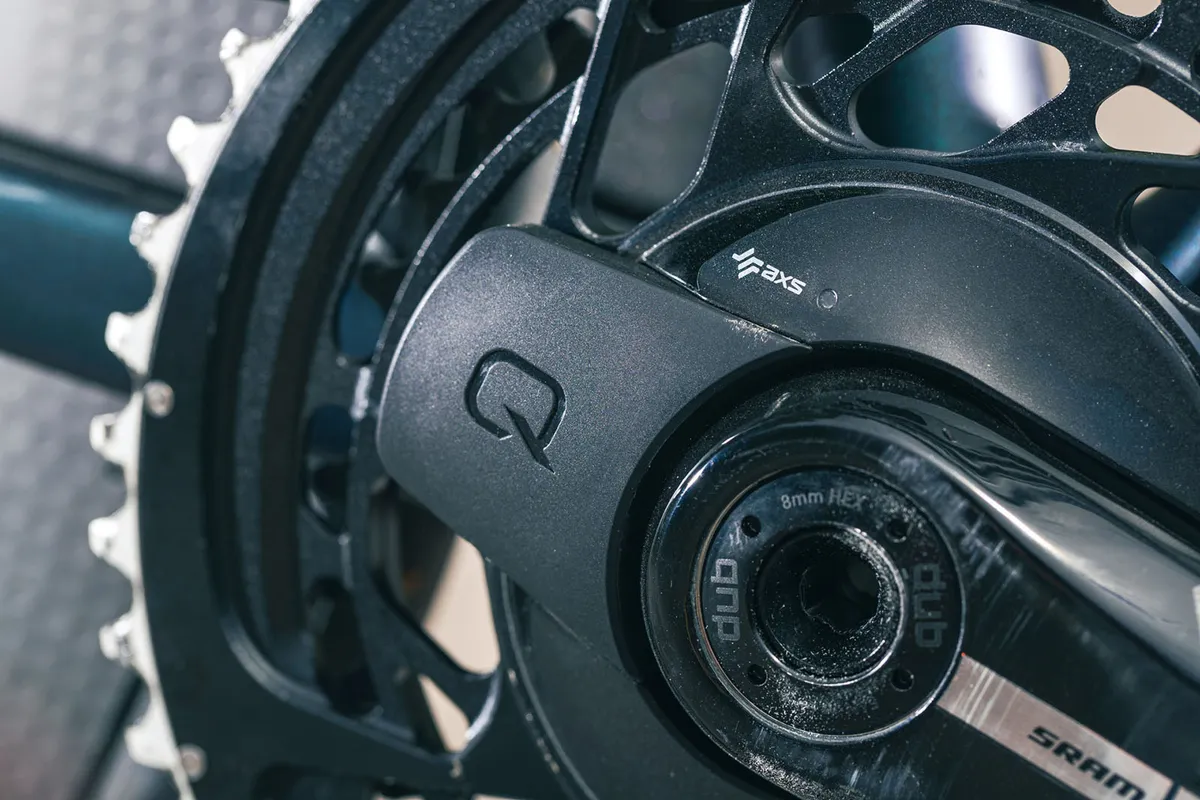
Force AXS comes with a multitude of options: 2x (as tested here), 1x, 2x Wide, 1x Wide, plus XPLR variants. You can mix it with mountain bike AXS components too.
The 2x options are 50/37t, 48/35t, 46/33t and 46/30t, which should cover all bases.
It’s also worth noting that the components are all backwards-compatible with the previous generation, meaning an upgrade can happen gradually and where necessary.
SRAM Force AXS cassette
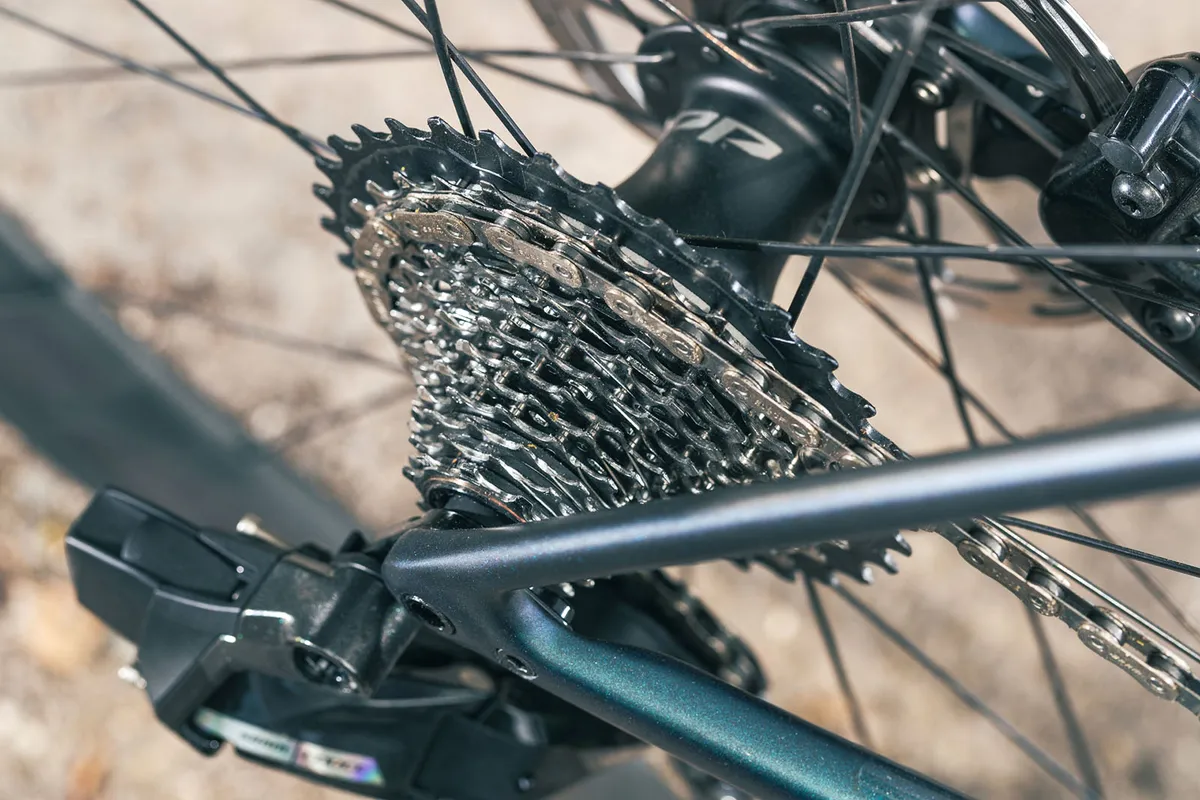
The Force AXS cassette has had a slight modification aimed at reducing chain noise. In short, it has worked.
For road use, the cassette is available in 10-28t, 10-30t, 10-33t, 10-36t options, plus a 10-44t XPLR cassette. SRAM also says you can use one of three Eagle AXS cassettes (11-50t, 10-50t or 10-52t) if you run it 1x.
I’ve been running the 10-33t cassette, which has well-spaced gear progressions: single-tooth jumps for the first six gears, with two-tooth jumps for the next three sprockets, before spacing extends for the easier sprockets on the block.
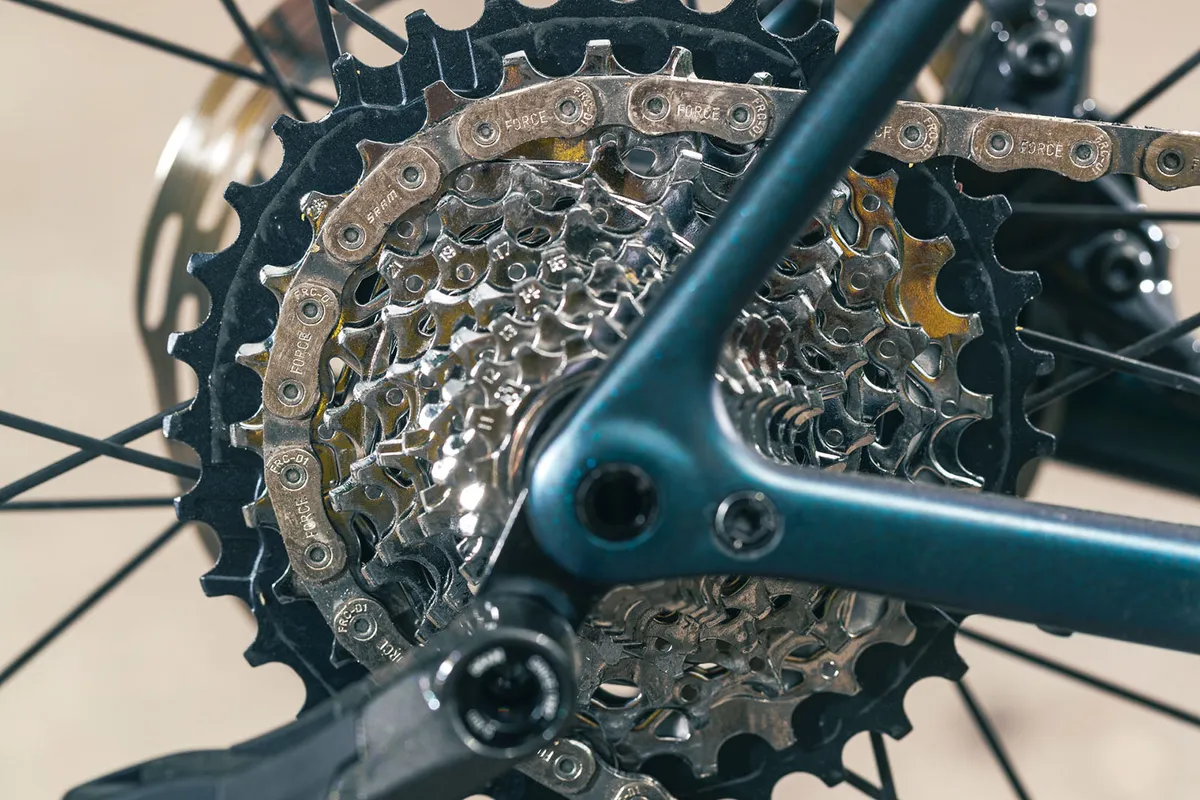
The range is: 10-11-12-13-14-15-17-19-21-24-28-33t.
On my test groupset, this cassette is paired with a 48/35t crankset. This provides the near-equivalent of a semi-compact 52/36t Shimano crankset paired with an 11-32t cassette, with slightly larger and lighter gears at either extreme of the cassette.
SRAM Force AXS chain
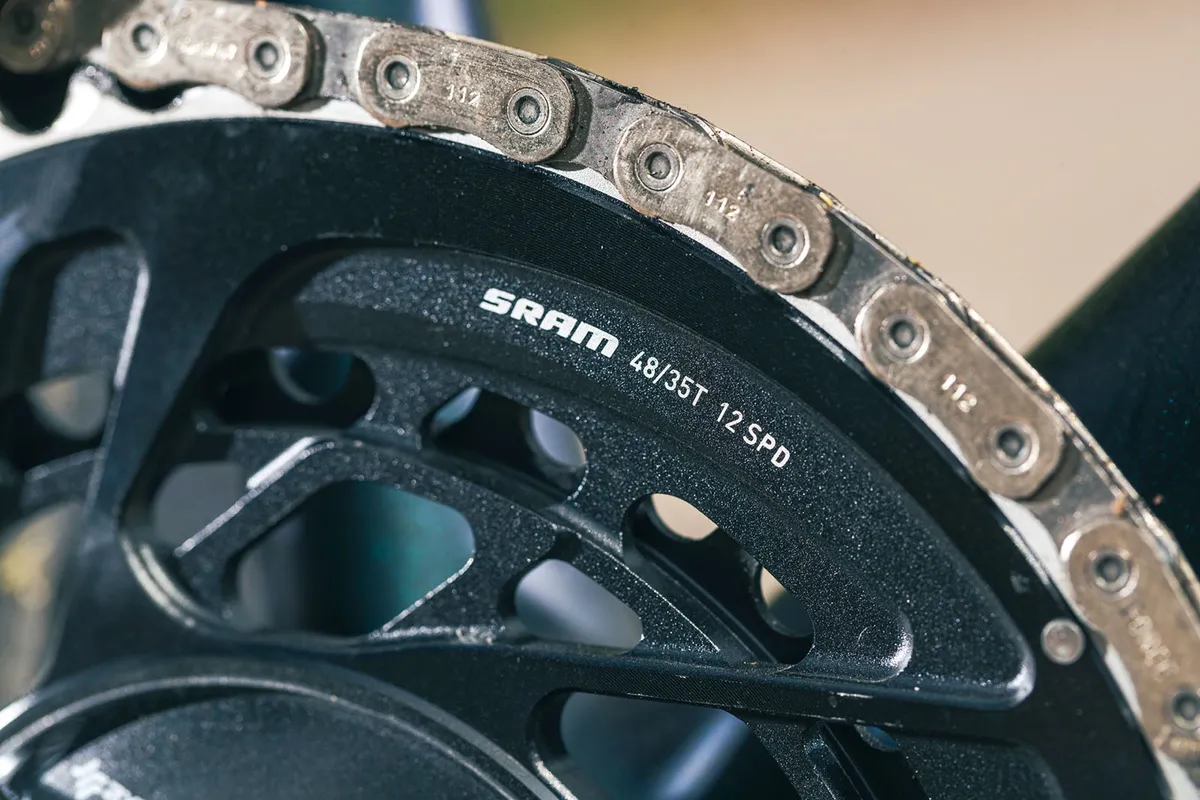
The chain is a carry-over from the previous-generation Force eTap AXS.
It uses the same flat-top chain design as Red, but gets solid pins rather than hollow ones.
This means it’s a little bit heavier with a claimed weight of 259g than Red at 249g (both with 114 links). My tested chain, with 107 links, weighed 242g.
According to SRAM, the flat-top construction allows for a narrower chain and hence more clearance with adjacent cogs, without compromising on strength.
SRAM Force AXS brake calipers
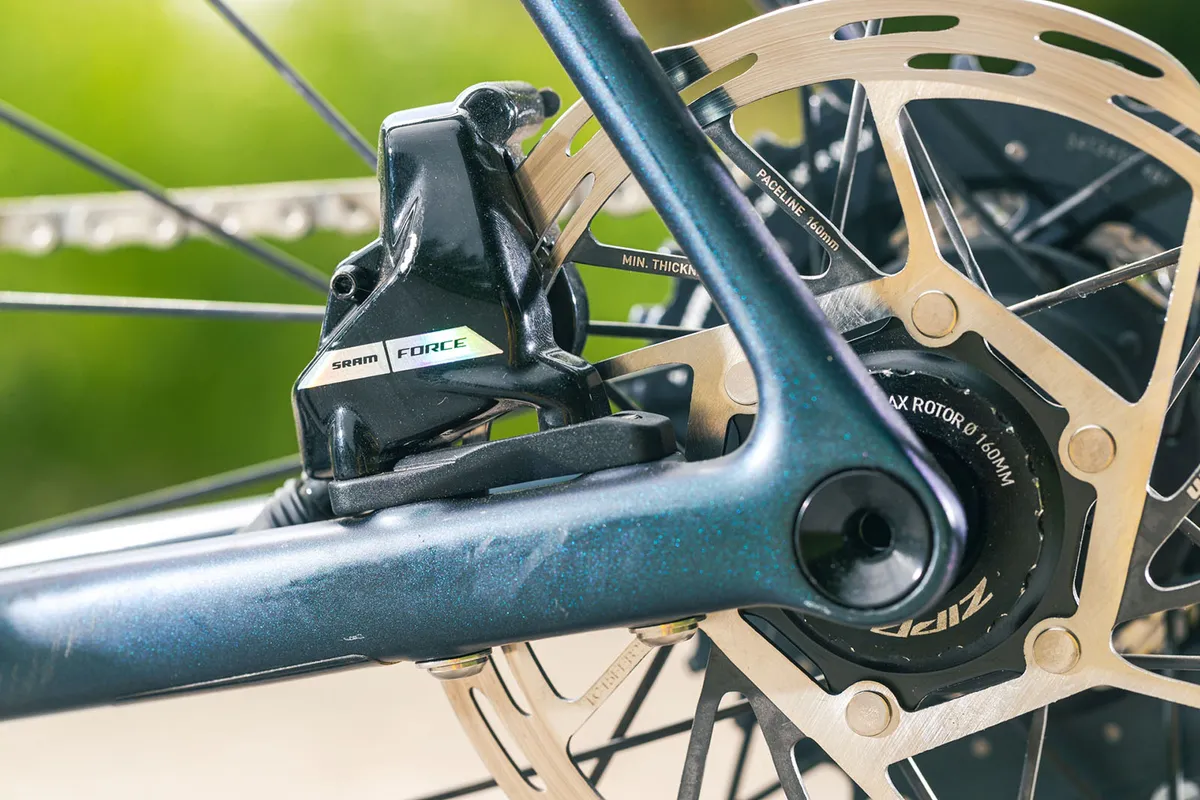
SRAM says it has improved its brake caliper design, moving from a solid body to a two-piece caliper.
The new design is said to enable a more accurately machined unit, which SRAM says will translate into better alignment of all assembled parts (including the rotors), and less chance of the pistons sticking and bringing about brake rub.
That claim certainly tallies with my experience of riding the new groupset.
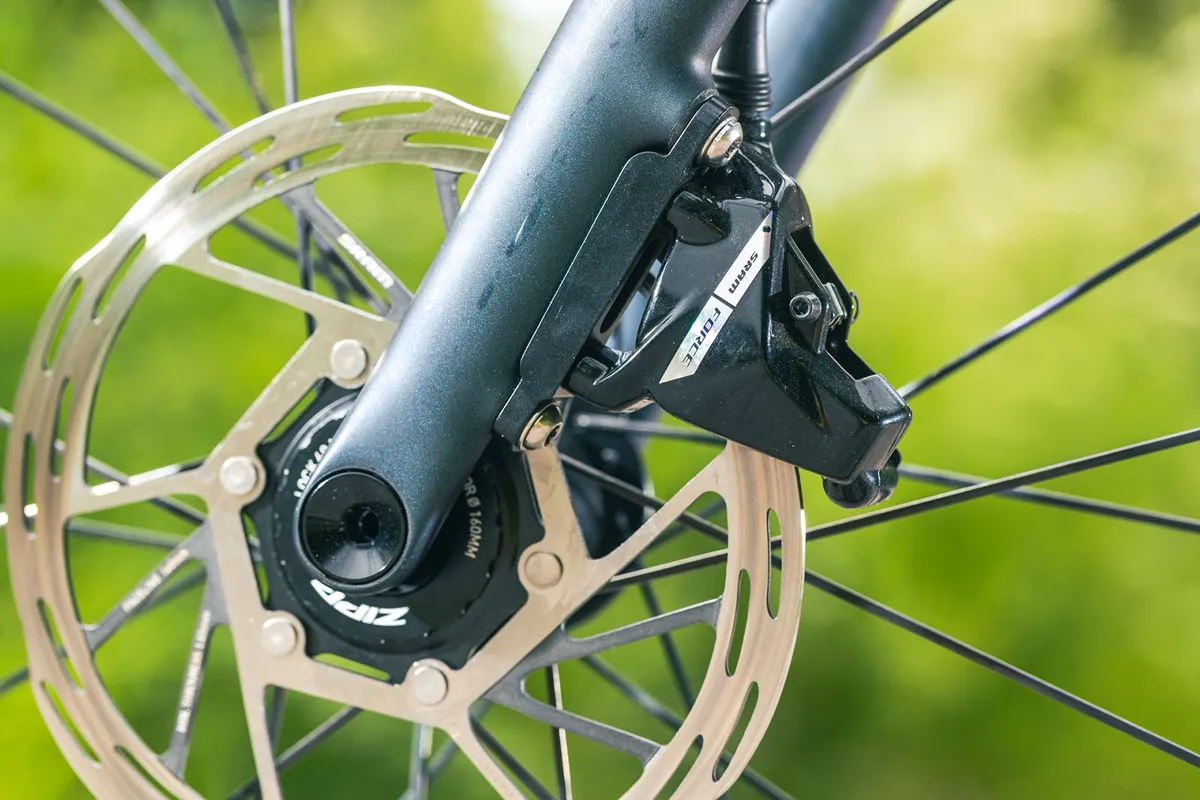
With the brand’s 160mm Paceline rotors installed (which are unchanged since the previous generation), I haven’t had the tell-tale rotor scrape with the new Force AXS. This is despite riding through the wettest March in the UK for 40 years.
Occasional rotor squeal is still present, but this remains commonplace across all braking systems to date when contaminants get into the mix.
SRAM Force AXS electronics
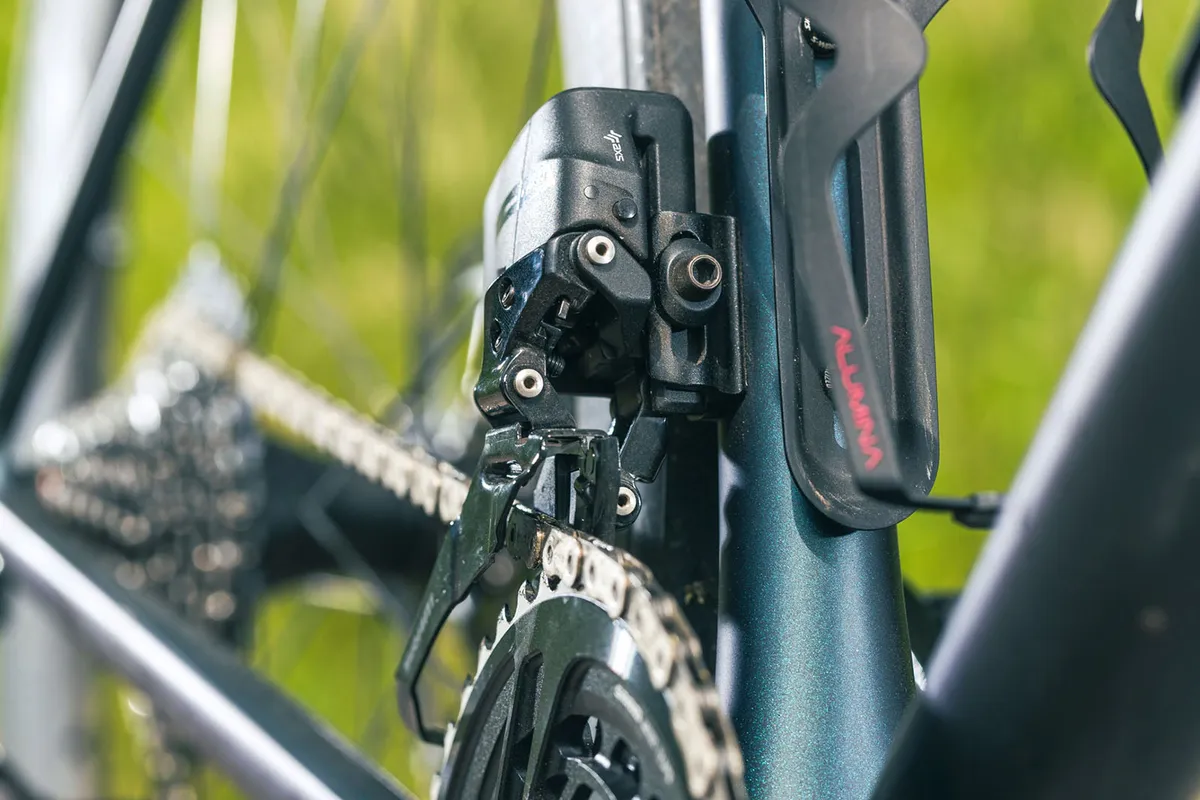
SRAM’s modular derailleur-mounting battery design has remained unchanged since the introduction of the first-generation 11-speed Red eTap in 2015
Meanwhile, the batteries themselves are unchanged since 2015 too.
Whereas Shimano, Campagnolo (until the launch of Super Record Wireless) and FSA all adopted the large-capacity central battery route, SRAM opted for two batteries, each with a claimed run time of around 20 hours (of continual shifting).
My experience from using eTap since 2016 is the batteries last for an acceptable length of time, although I’ve (understandably) not spent 20 hours continuously shifting to test SRAM’s out-of-context claim.
SRAM recommends removing the batteries and fitting the included terminal covers when the bike is being transported.
Because the system is motion-activated, it will be live and draining a small amount of power even though you’re not riding.

The batteries also continue to protrude from the derailleur bodies, which is an aesthetic that will matter more to some than others. Personally, I quite like the look of them.
In any event, it’s worth making use of the covers when the bike’s not in use for prolonged periods because it makes the derailleurs less vulnerable to accidental damage (because they’re effectively smaller with the covers in place).
One of the clear advantages of the separate batteries is the ability to swap them on the fly.
You could carry a spare charged battery, switch them if you’re running a 2× drivetrain and need to prioritise the rear derailleur, or pinch one from your AXS dropper seatpost (which uses the same batteries).
The batteries are £56 each, although naturally two are provided to power both derailleurs.
SRAM AXS app
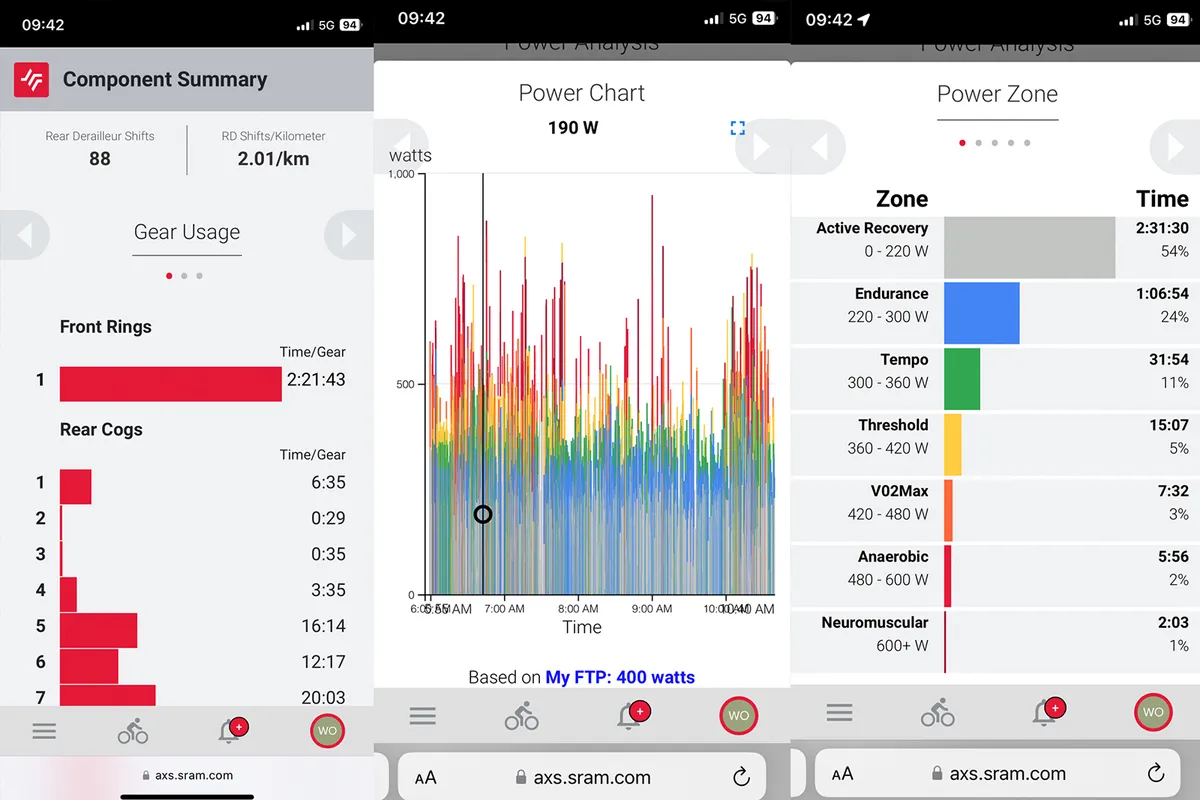
SRAM remains the leader of the pack when it comes to data analytics, despite Shimano making some good progress in this area in recent times.
The AXS app provides a wealth of tech adjustability from your phone, such as derailleur adjustments, firmware updates, shift speed and more.
Its ace in the hole is the impressive amount of data it’ll record in one place – the number of shifts, time spent in each gear, plus performance metrics such as heart rate, power, cadence and GPS data.
While many might be happy with their separate chosen bike computer and third-party tracking services, SRAM enables all of your ride data to be recorded in one place, before uploading onwards to the likes of Strava.
SRAM Force AXS aesthetics
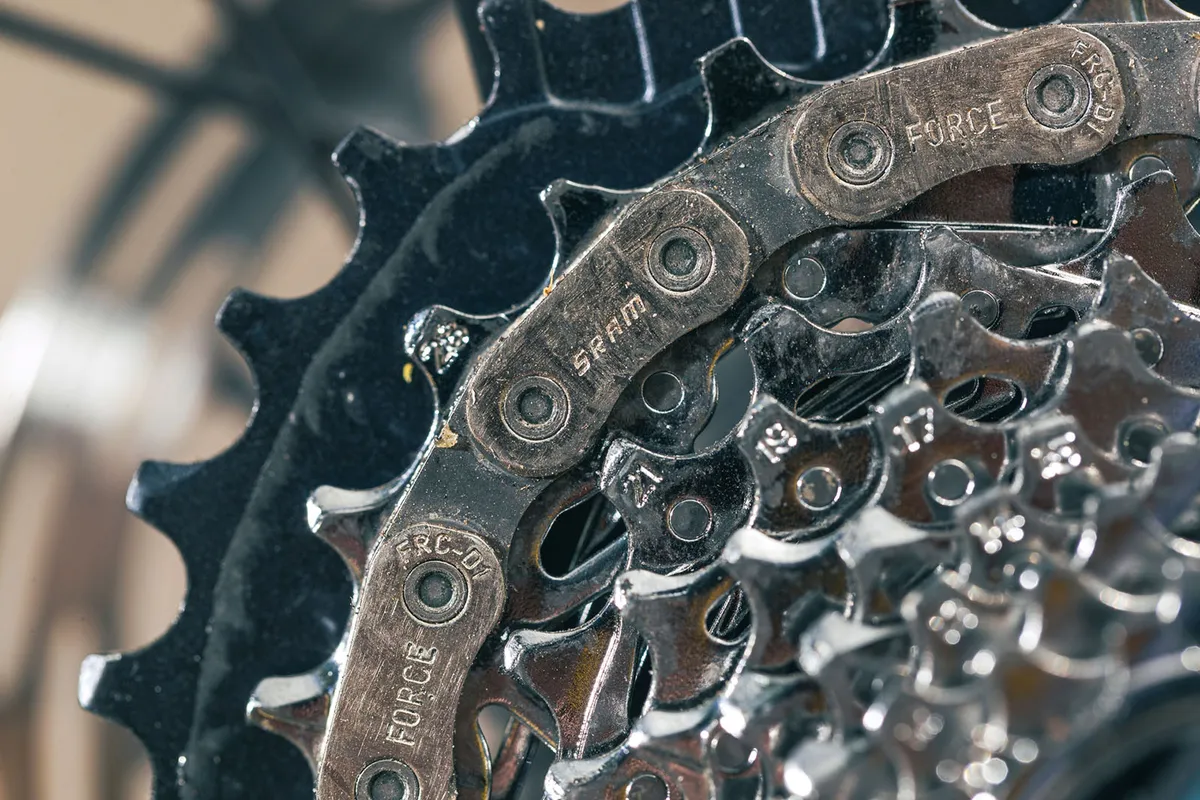
One criticism I had of the previous-generation Force AXS was it looked a bit like a collection of bits bolted together, rather than a coherent whole.
SRAM appears to have upped its game here. The chainset now features one-piece machined parts, for example, instead of the old mix of grey carbon crank arm, black spider and black chainrings.
The all-black finish across the levers and derailleurs, which has a subtle metal-flake sparkle, plus the oil-slick shiny logos, certainly helps to make Force AXS look much more premium than previously.
Aesthetics such as these are certainly subjective, but I think Force AXS now looks like the premium performance groupset it is.
SRAM Force AXS price comparison
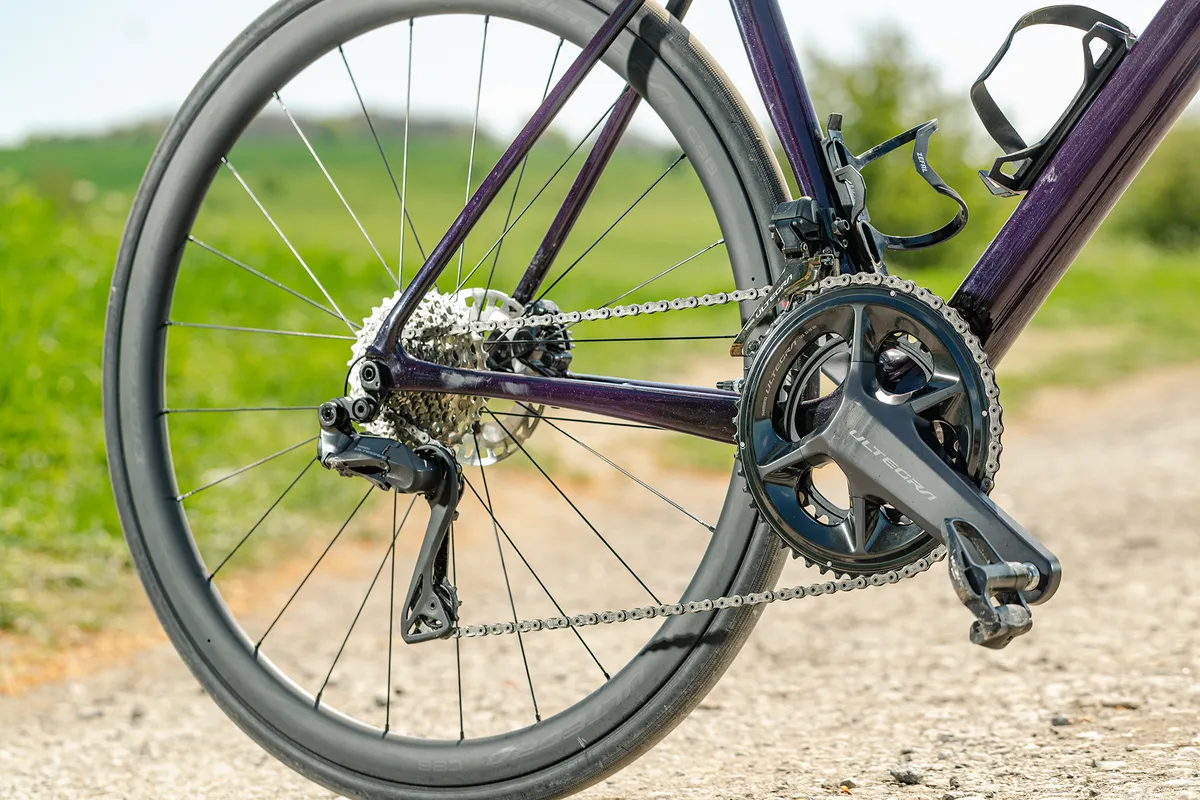
With this latest Force AXS rivalling (no pun intended) Ultegra Di2 R8100, many will ask which groupset is the best buy – in my opinion, they’re very close when it comes to performance.
On paper at least, price could be a deciding factor – it’s here there’s arguably the largest difference between the two.
Retailer variances aside, Force AXS in a comparable 2x setup (without a power meter) should cost £1,728, whereas Shimano Ultegra Di2 (also without a power meter) is £2,328.
Notably, buy Force AXS with its dual-sided Quarq power meter crankset, and it still works out cheaper than a non-power meter Ultegra Di2 R8100 by more than £100 (albeit you’ll need to replace the whole assembly when a chainring needs replacing, unlike Shimano).
When it comes to buying bikes with each groupset, however, there is far greater parity between the two.
In fact, in some cases you can find otherwise equivalently specced bikes cheaper with Ultegra Di2 R8100 installed than Force AXS.
For example, our 2023 Bike of the Year overall winner, the Vitus Venon EVO RS Aero costs £4,699 built with Force AXS. With Ultegra Di2 R8100, it costs £4,399.
In the end, buying a Force AXS groupset to fit to your existing bike is likely (although not certain) to work out cheaper. Meanwhile, complete bikes may prove to be a different story on a brand-by-brand basis.
SRAM Force AXS bottom line
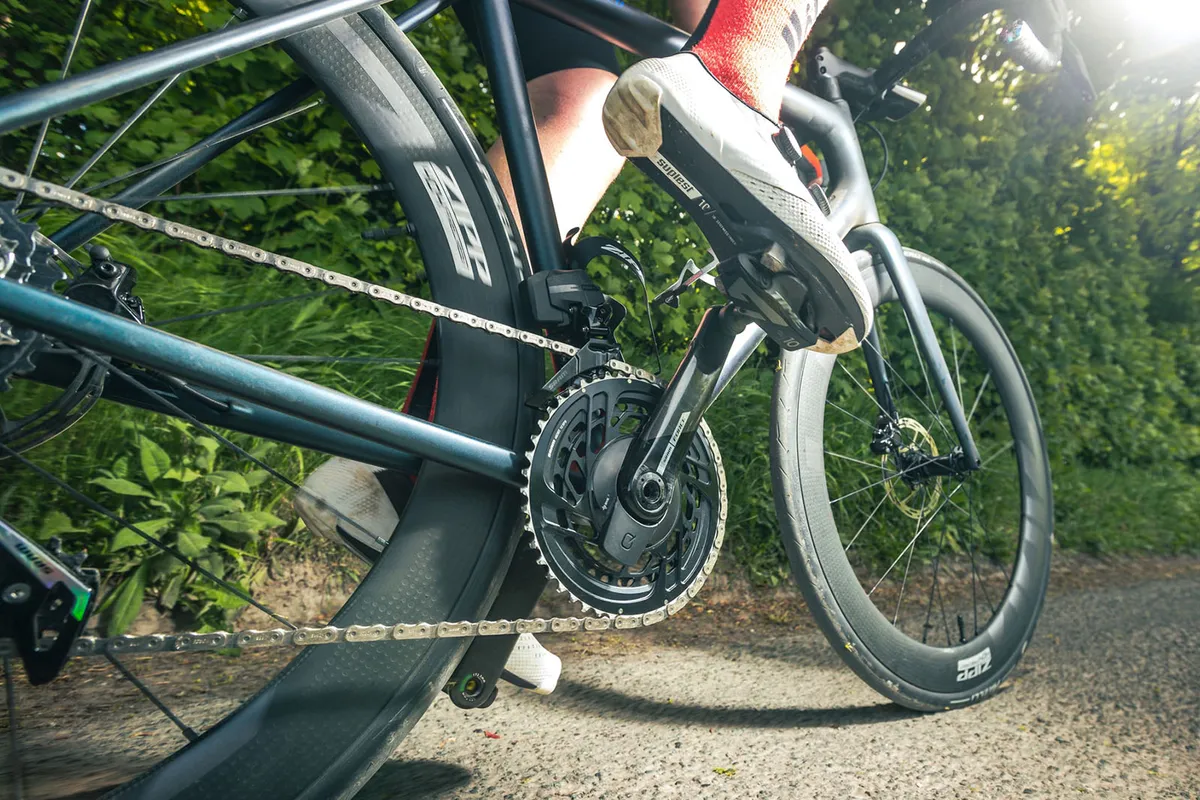
SRAM has taken what was already a premium groupset and improved its performance, ergonomics and aesthetics.
Its functionality is brilliantly accomplished – rear shifting is now quieter and slicker than ever, braking is less prone to noise, and front-derailleur shifting is on a par with Shimano in both speed and stability (although the shift logic can arguably make it feel a fraction slower).
SRAM also offers lots of build options, which makes Force AXS a particularly flexible groupset.
Meanwhile, SRAM’s AXS app remains a standard-setter, both for easy firmware updates and data collection.
Are the improvements big enough to justify an immediate upgrade? My gut feeling is no – the previous system isn’t flawless but it’s still a reliable, rugged and rapid-shifting groupset.
But for anyone in the market for a broadly Ultegra Di2 R8100-rivalling groupset, Force AXS should be a consideration.
SRAM Force AXS weights
- Force AXS shifters: 468g (pair)
- Force AXS rear derailleur: 328g (including battery)
- Force AXS front derailleur: 182g (including battery)
- Force AXS chainset 48/35: 748g (with power meter)
- Force AXS cassette 10-33: 273g
- Force AXS brake calipers: 286g (with hose & brake fluid), 130g (f), 156g (r)
- Paceline rotors 160mm: 320g (pair)
- Force AXS chain: 242g
- Sram DUB bottom bracket: 76g
- Total weight: 2,922g
SRAM Force AXS prices
- Rear derailleur: £302/$377/€360
- Front derailleur: £198/$243/€222
- Batteries x2: £112/$118/€126
- Crankset: £295/$275/€330
- Bottom bracket (BB86): £42/$46/€50
- Shifters (pair, includes hoses and flat mount brakes): £456/$700/€510
- Cassette: £179/$195/€200
- Chain: £36/$50/€60
- Brake rotors (160mm pair): £108/$172/€94
- Total price without power meter: £1,728/$2,176/€1,952
- Power meter: £772/$800/€856
- Total price with power meter: £2,205/$2,701/€2,478
Product
| Brand | sram |
| Price | 2478.00 EUR,2205.00 GBP,2701.00 USD |
| Weight | 2922.0000, GRAM () - All components as tested |
Features
| br_brakeType | hydraulic_disc |
| br_cassetteOptions | 10-11-12-13-14-15-17-19-21-24-28-33t |
| br_chainringOptions | 50/37t, 48/35t, 46/33t, and 46/30t |
